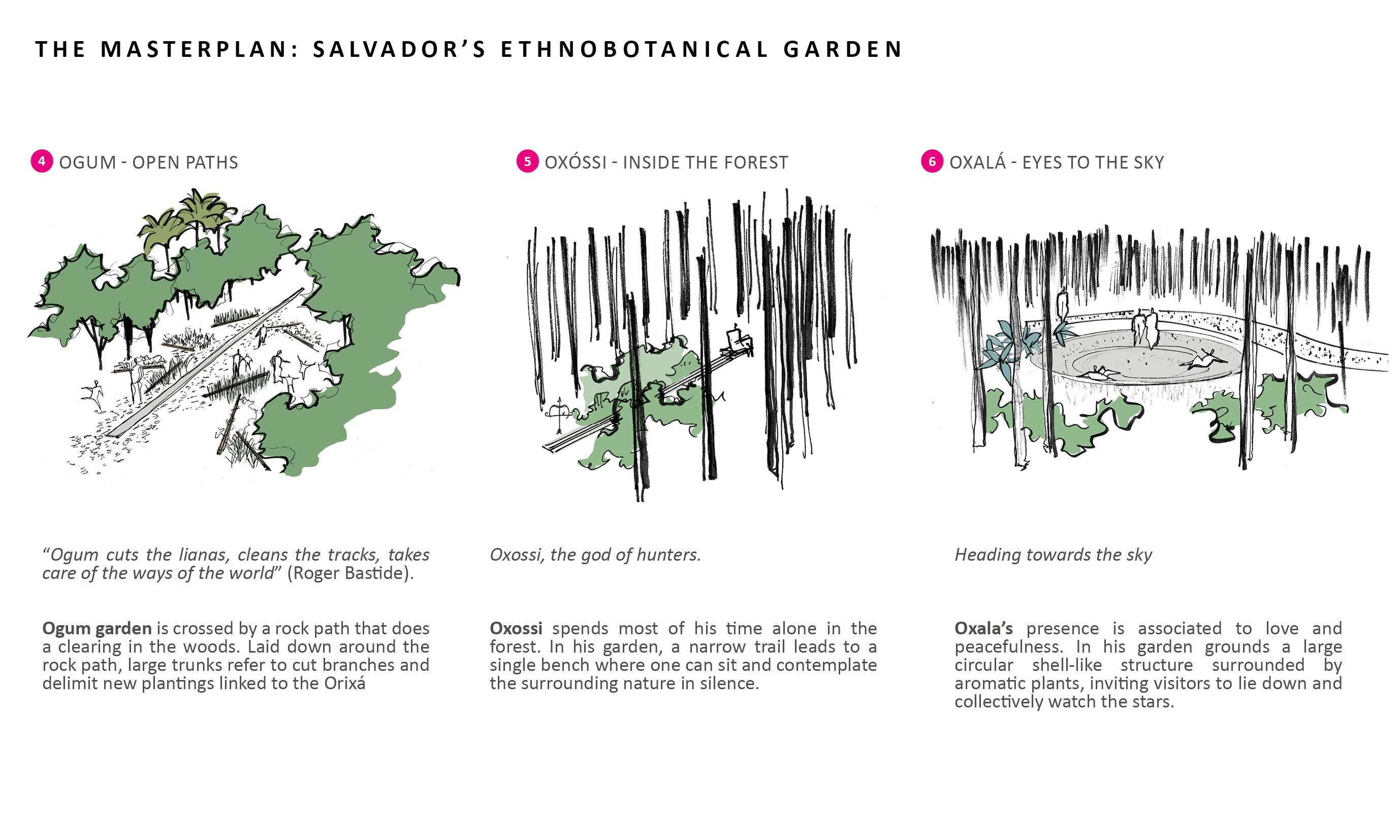
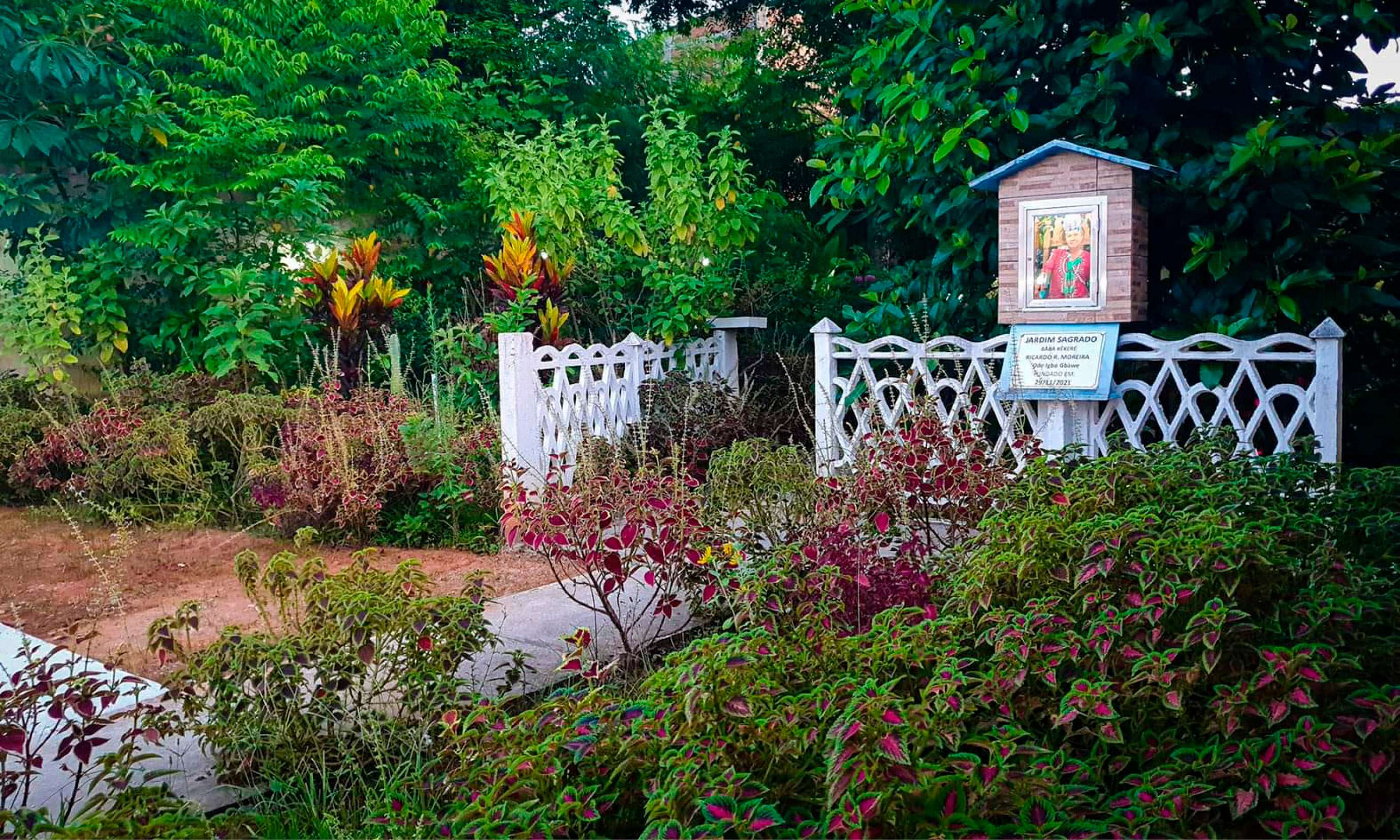
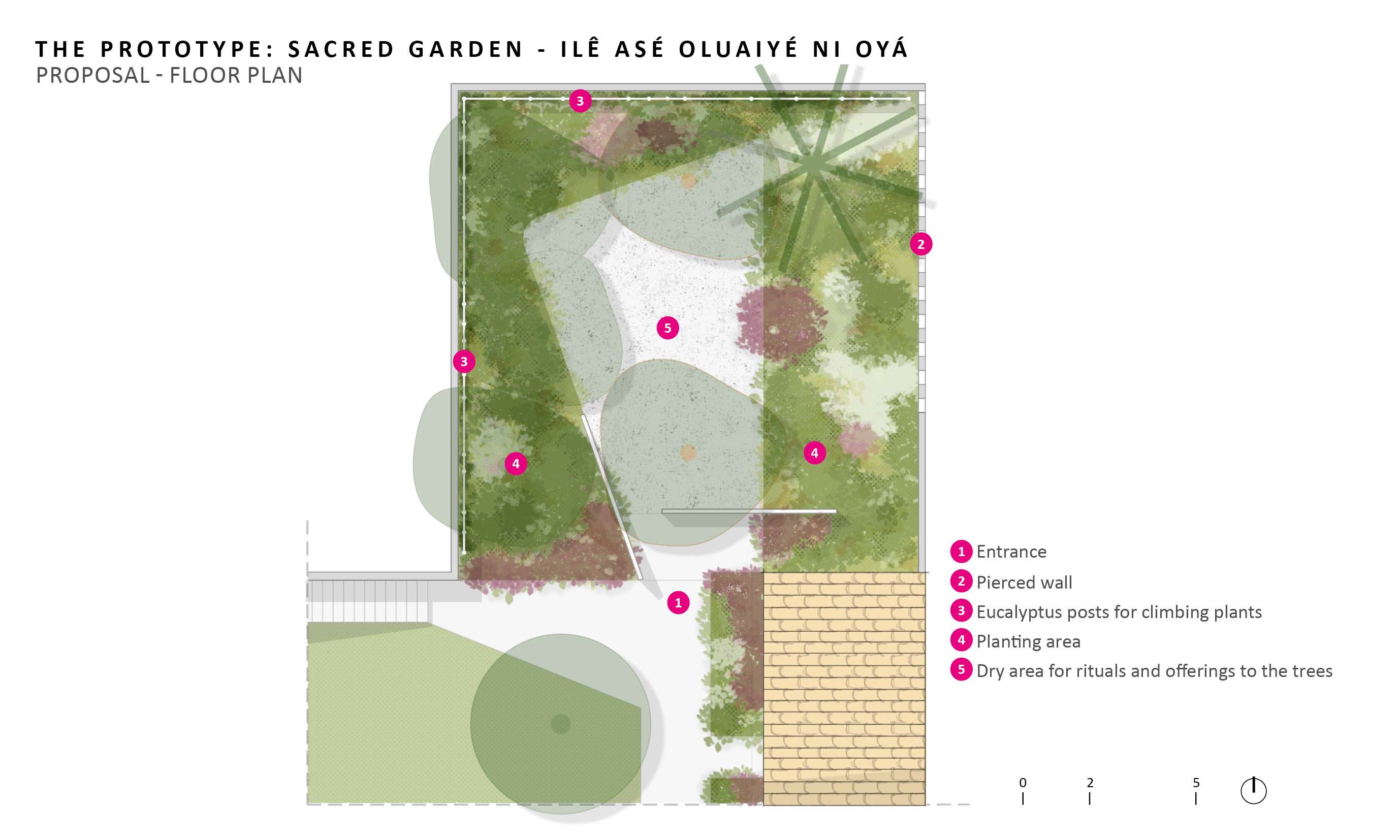


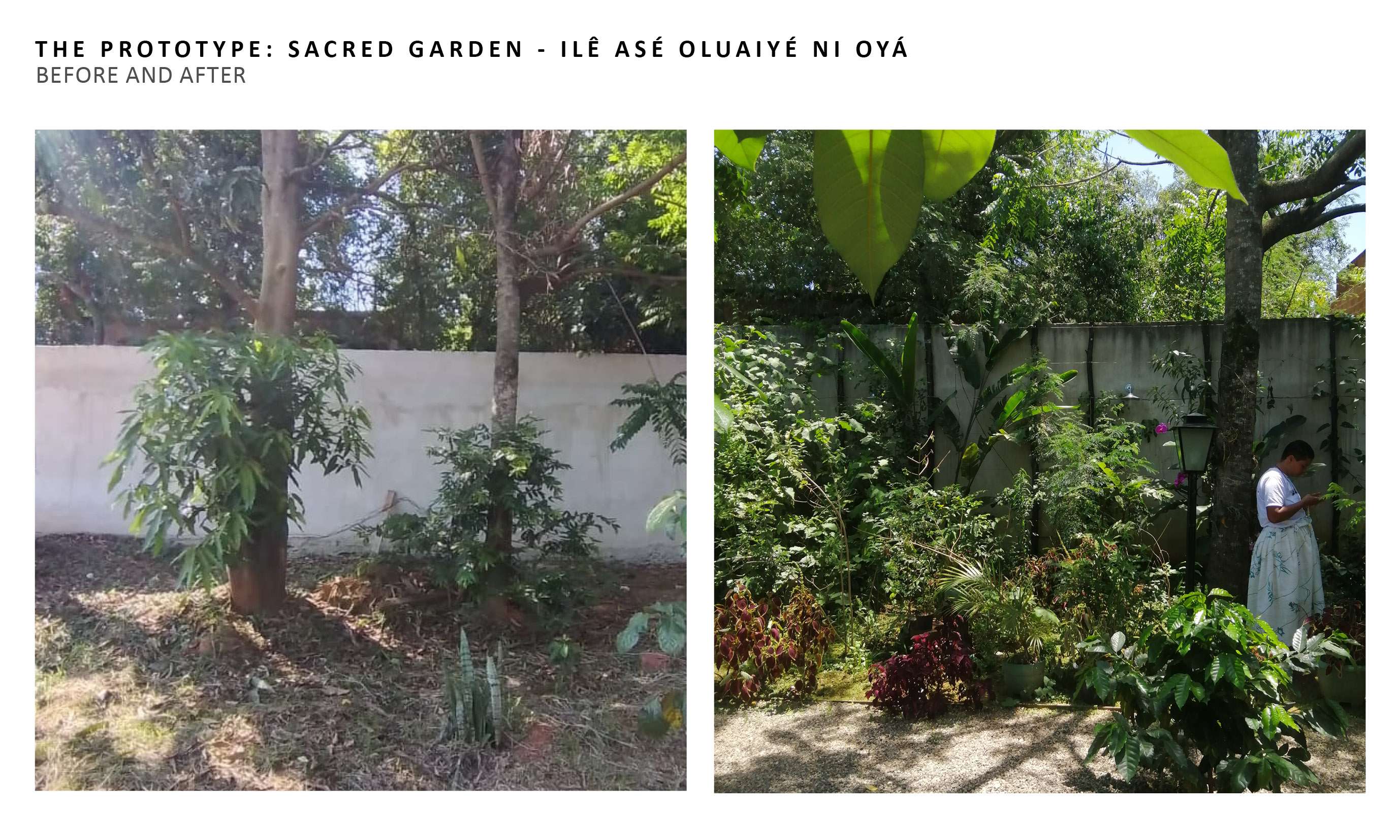
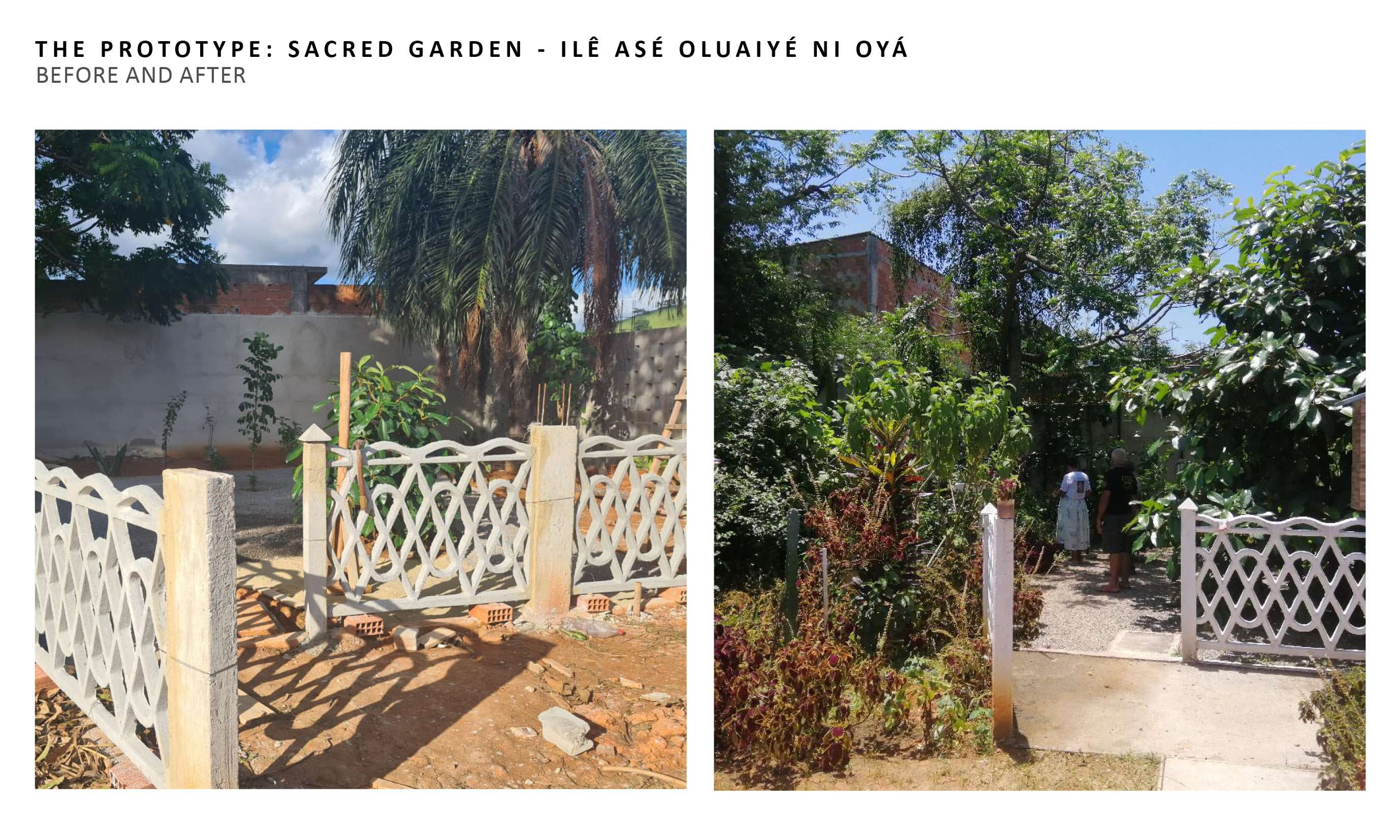
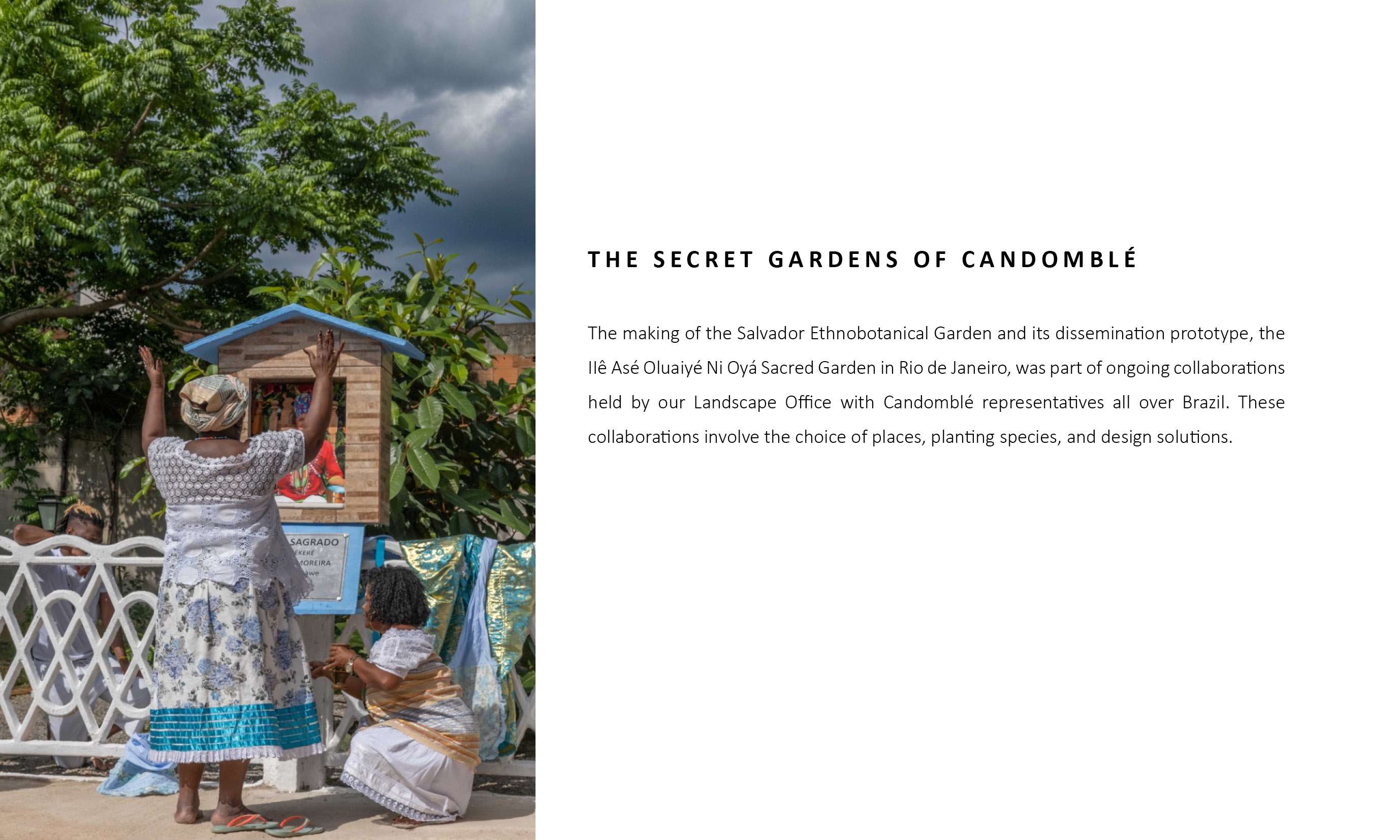
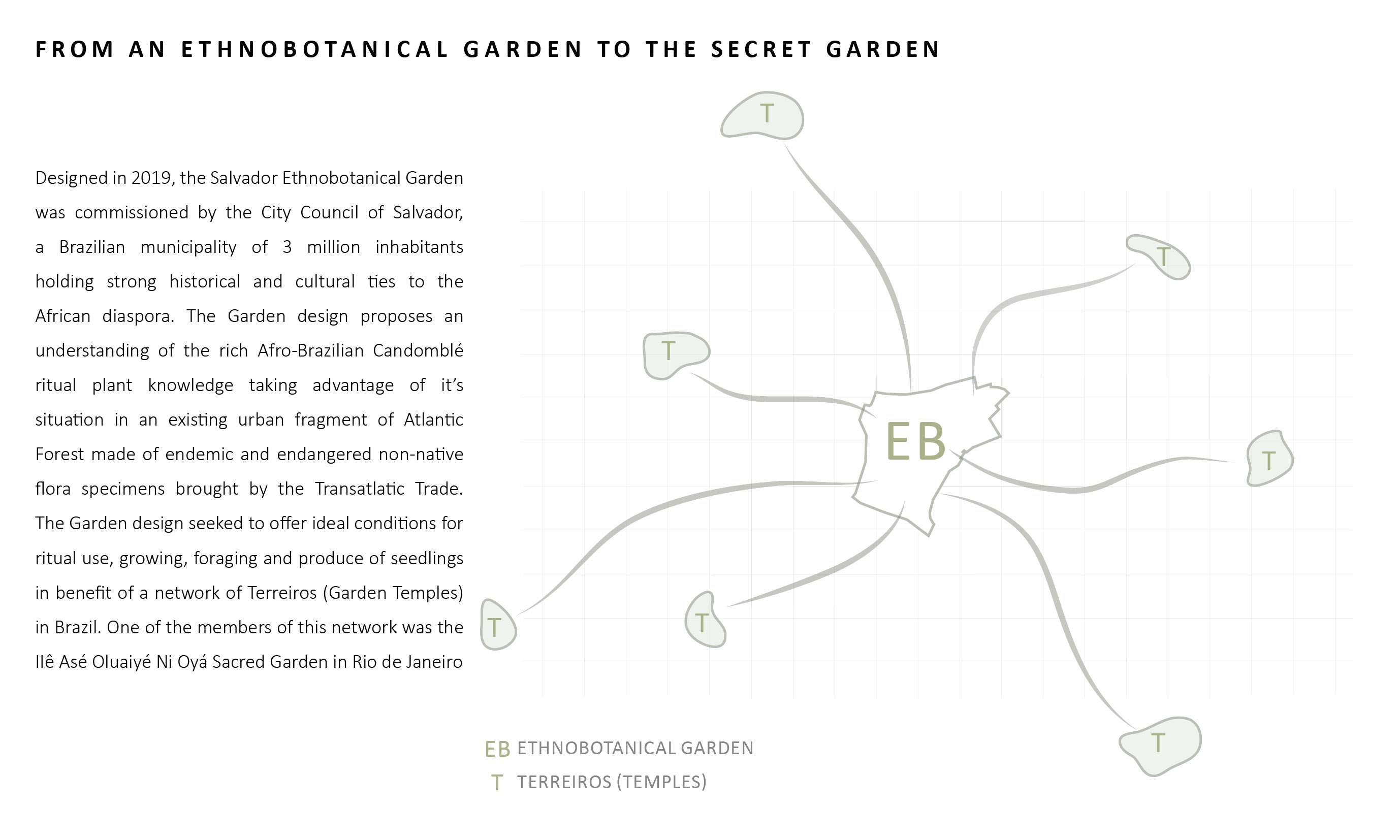
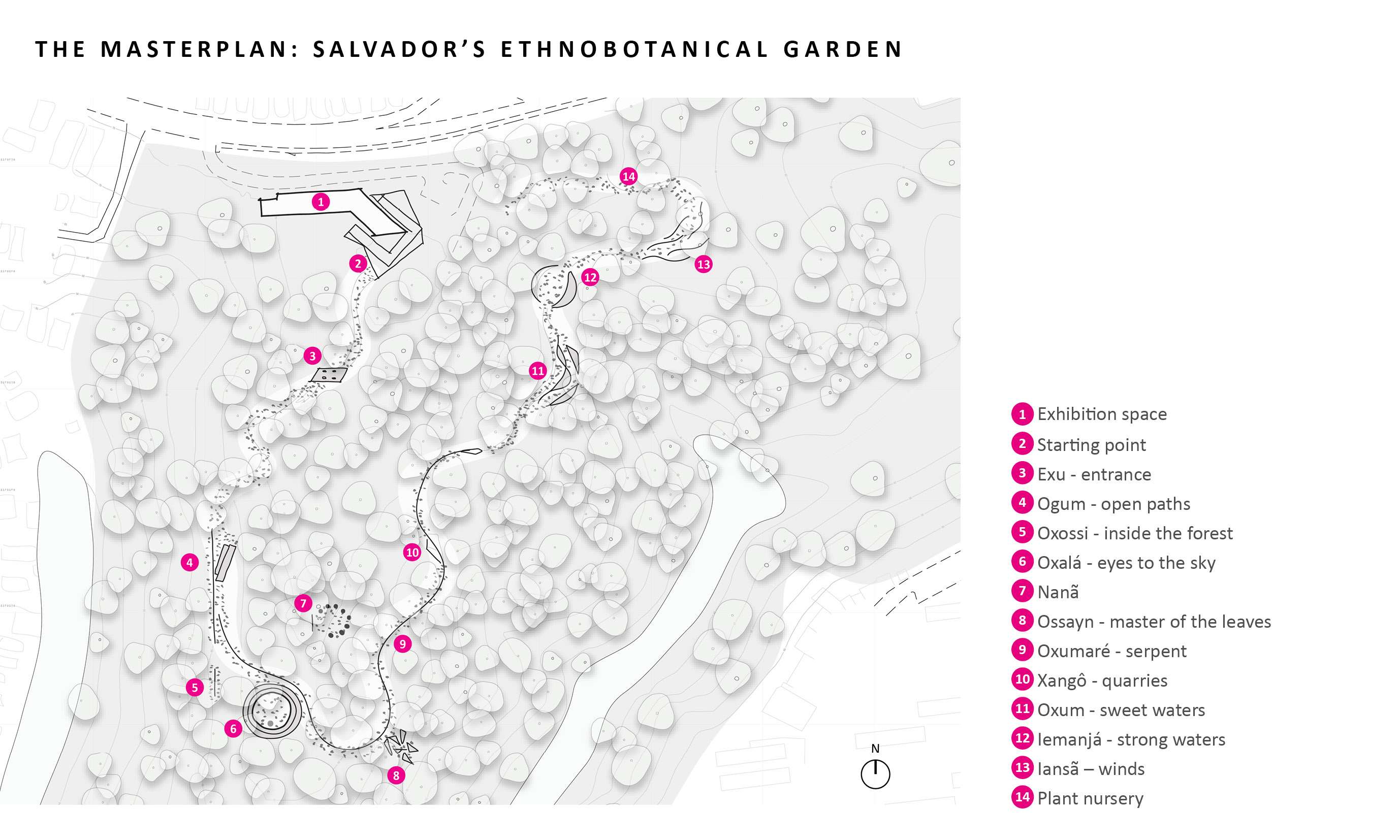
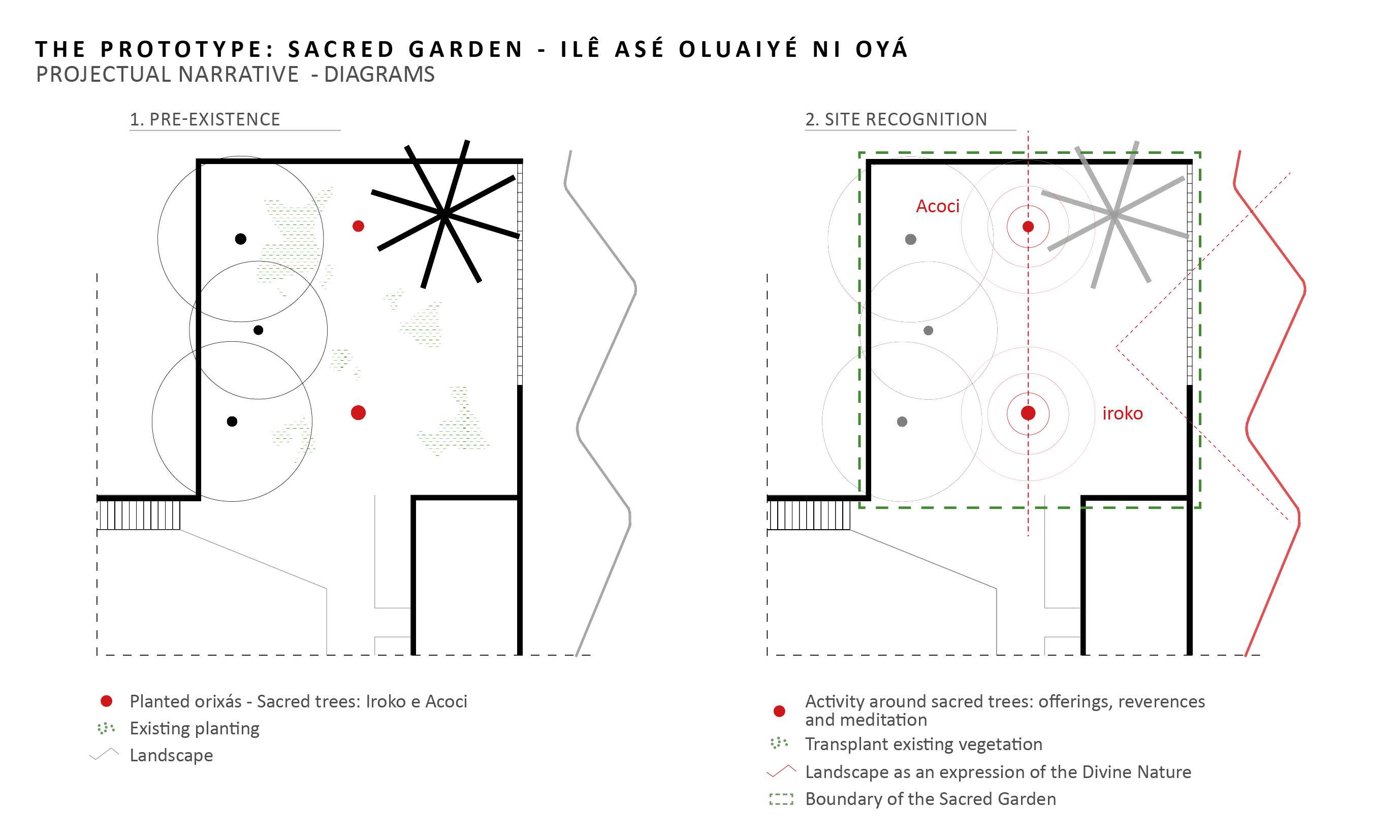

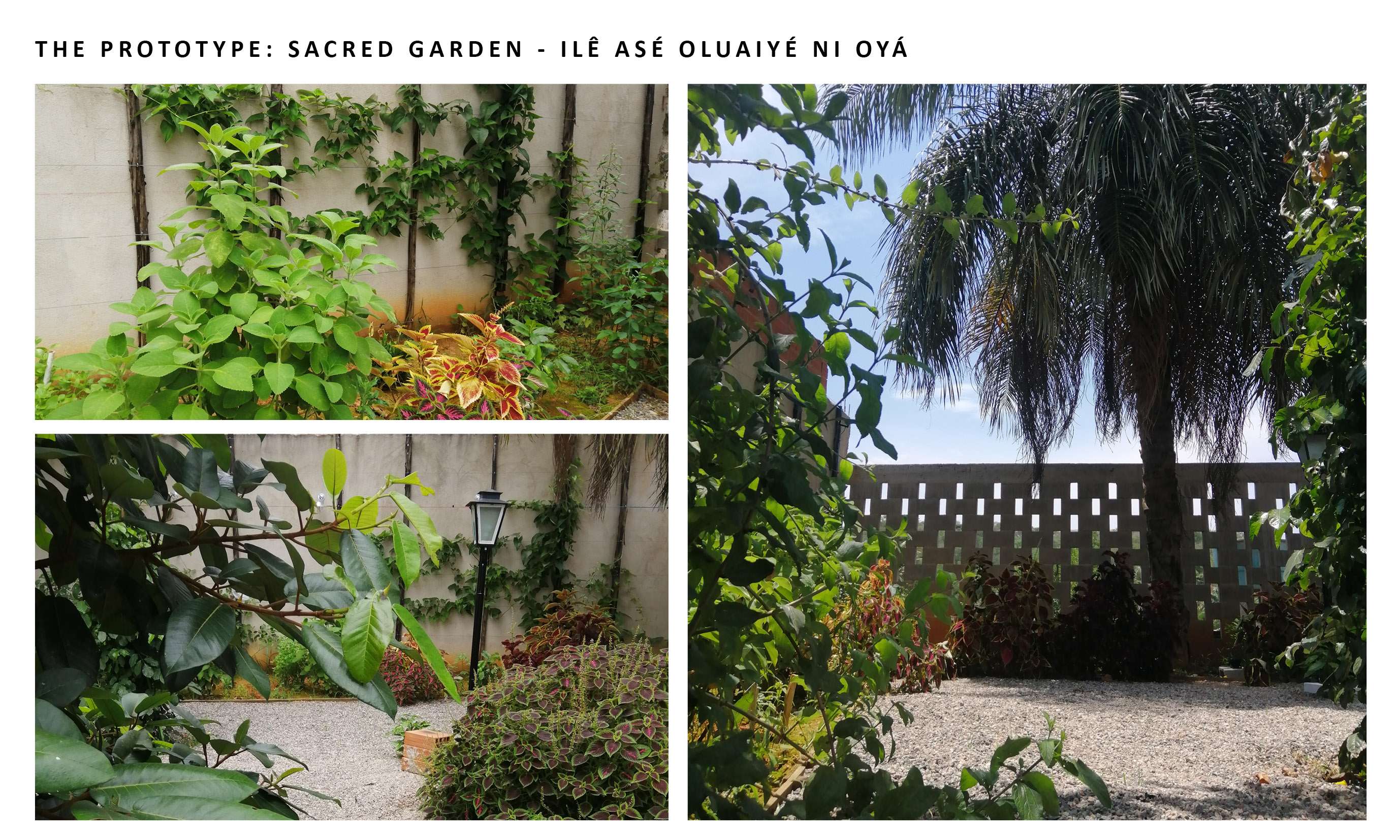
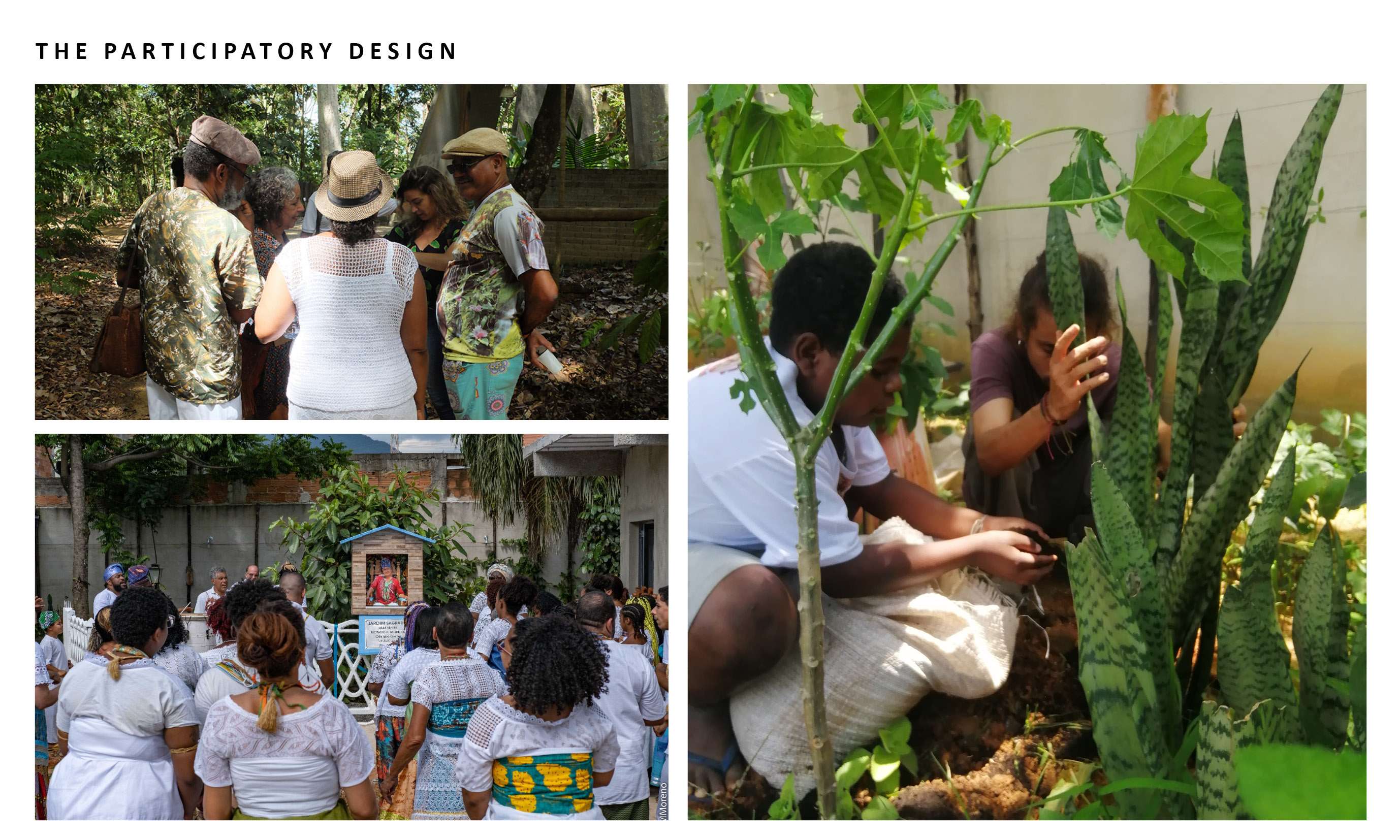
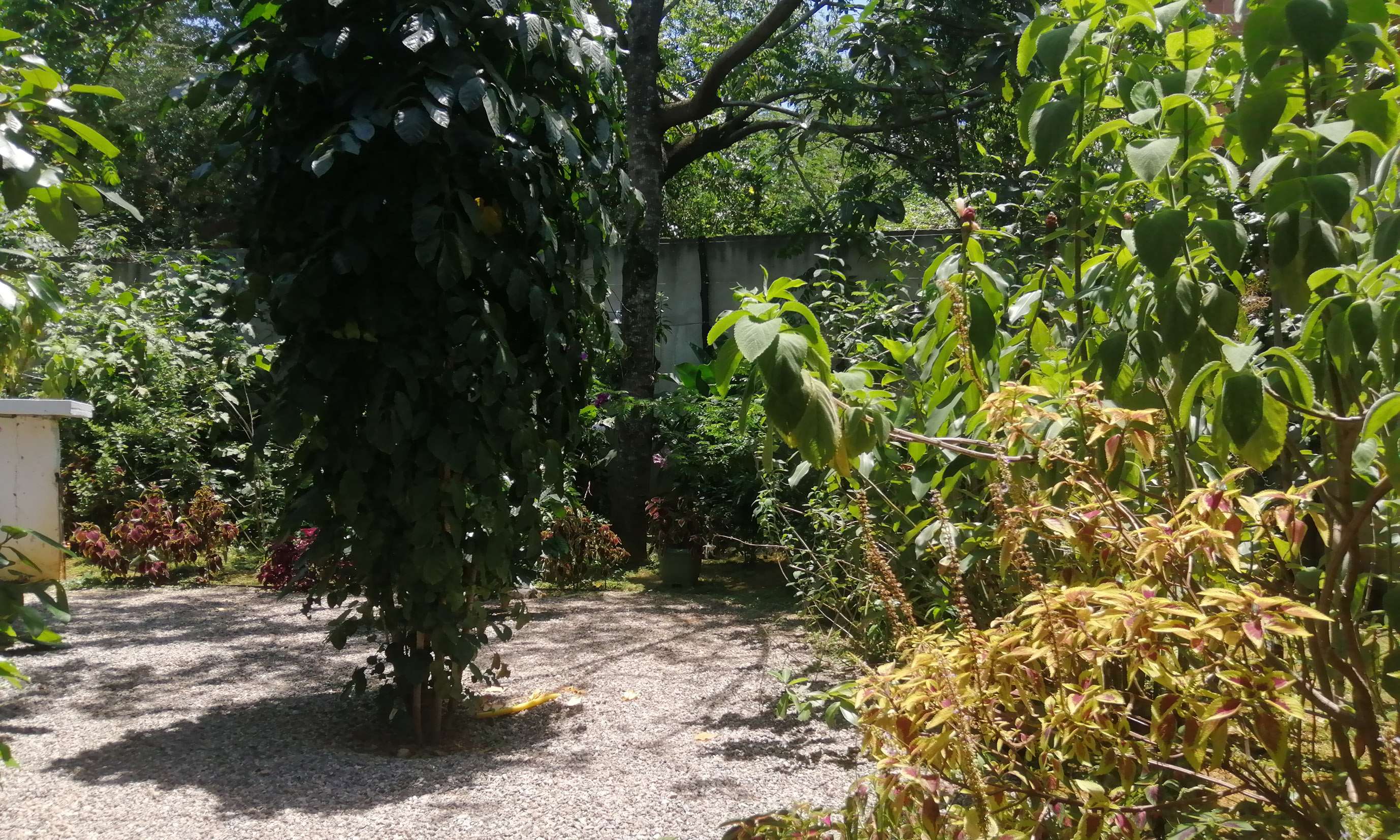
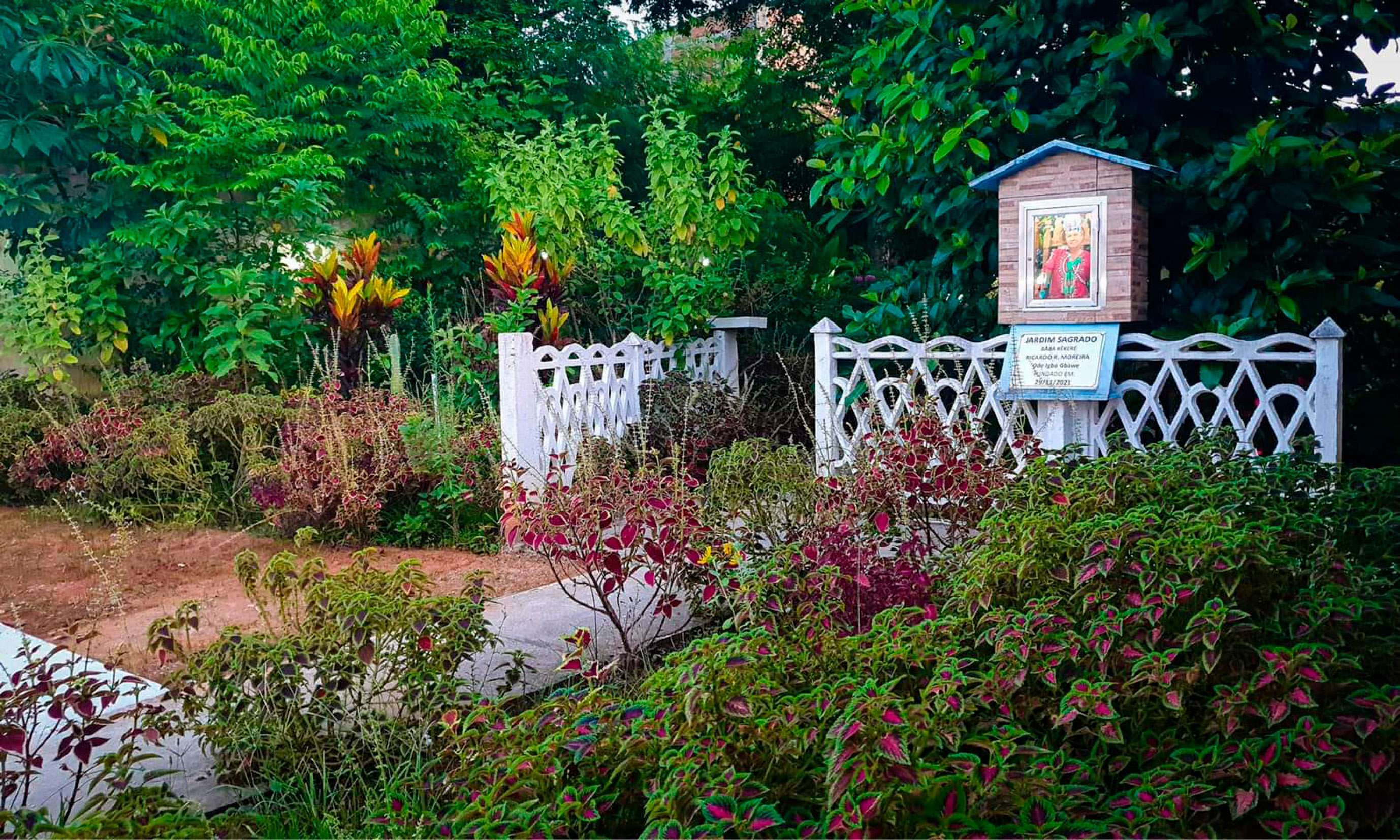
OS JARDINS SAGRADOS DO CANDOMBLÉ
THE SECRET GARDENS OF CANDOMBLÉ
The making of the Salvador Ethnobotanical Garden and its dissemination prototype, the IIê Asé Oluaiyé Ni Oyá Sacred Garden in Rio de Janeiro, was part of ongoing collaborations held by our Landscape Office with Candomblé representatives all over Brazil. These collaborations involve the choice of places, planting species, and design solutions. Designed in 2019, the Salvador Ethnobotanical Garden was commissioned by the City Council of Salvador, a Brazilian municipality of 3 million inhabitants holding strong historical and cultural ties to the African-Brazilian diaspora. The Garden design proposes an understanding of the rich Afro-Brazilian Candomblé ritual plant knowledge taking advantage of its situation in an existing urban fragment of Atlantic Forest made of endemic and endangered non-native flora specimens brought by the Transatlantic Trade. An open circuit of small and medium-sized intimate places connected to specific Orixás was proposed for this space, rendering the presence of these Candomblé divinities by a multisensory experience involving the smell, colors, and texture of leaves and flowers, as well as the site’s features such as water resources, natural levels of light, slopes, prevailing winds, and preexisting plants. In addition, the Garden design also sought to offer ideal conditions for ritual use, growing, foraging, and production of seedlings in benefit of a network of Terreiros (Garden Temples) in Brazil. One of the members of this network was the IIê Asé Oluaiyé Ni Oyá Sacred Garden in Rio de Janeiro. This project was done in 2021, and its location and settling were chosen by its leader. The Terreiro’s head also provided other constraints for the project, such as respect to the intimacy of the planting site, the creation of discrete connections with the external landscape; the need for a small square for rituals and offerings, and the resource to a concrete fence also used to decorate other parts of the Terreiro for the Garden’s entrance
The project was built without hiring a construction company. The temple where the garden was built took responsibility for the construction and maintenance
